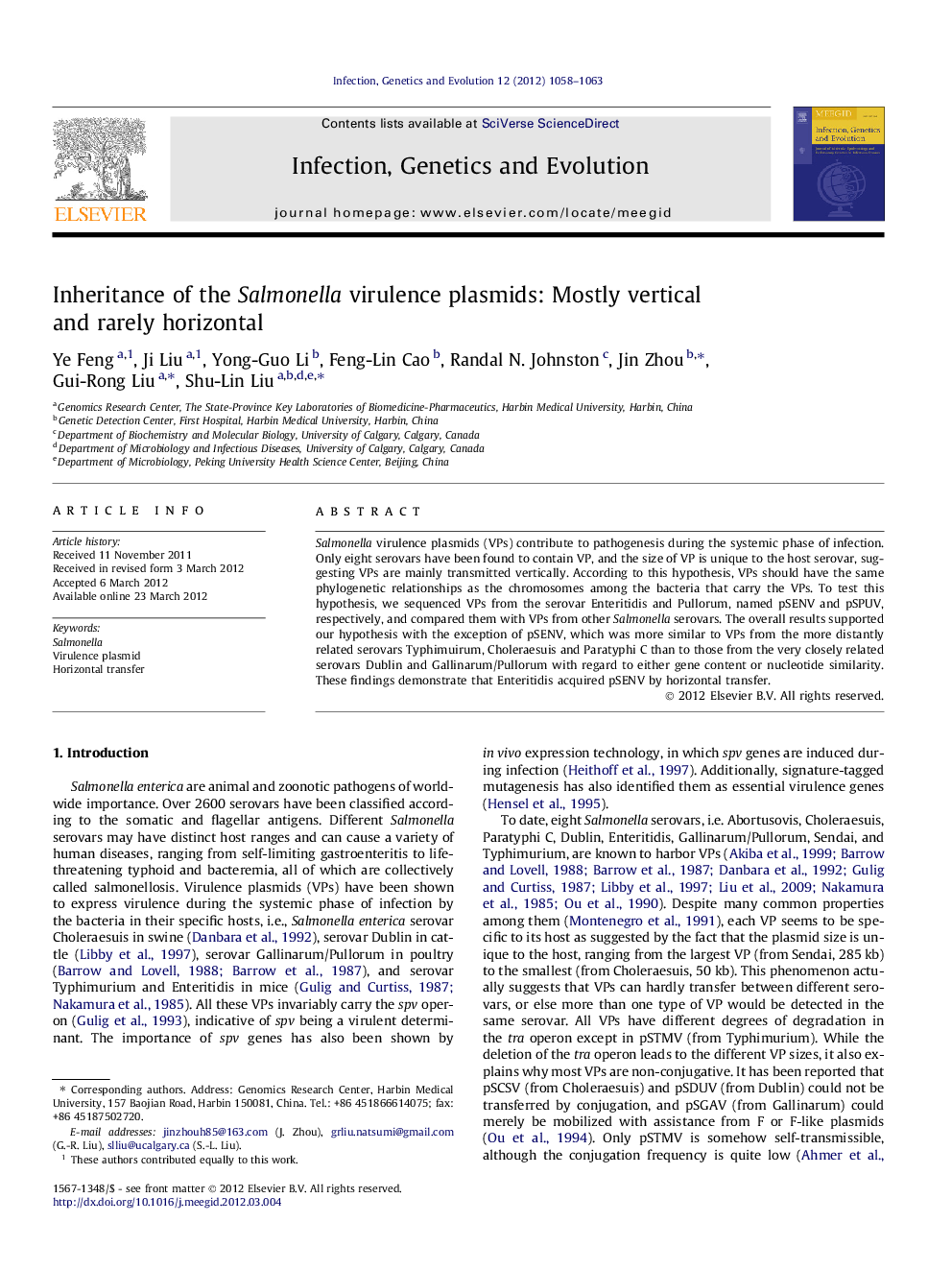| Article ID | Journal | Published Year | Pages | File Type |
|---|---|---|---|---|
| 5911215 | Infection, Genetics and Evolution | 2012 | 6 Pages |
Salmonella virulence plasmids (VPs) contribute to pathogenesis during the systemic phase of infection. Only eight serovars have been found to contain VP, and the size of VP is unique to the host serovar, suggesting VPs are mainly transmitted vertically. According to this hypothesis, VPs should have the same phylogenetic relationships as the chromosomes among the bacteria that carry the VPs. To test this hypothesis, we sequenced VPs from the serovar Enteritidis and Pullorum, named pSENV and pSPUV, respectively, and compared them with VPs from other Salmonella serovars. The overall results supported our hypothesis with the exception of pSENV, which was more similar to VPs from the more distantly related serovars Typhimuirum, Choleraesuis and Paratyphi C than to those from the very closely related serovars Dublin and Gallinarum/Pullorum with regard to either gene content or nucleotide similarity. These findings demonstrate that Enteritidis acquired pSENV by horizontal transfer.
⺠Many Salmonella pathogens depend on virulence plasmids to establish infections. ⺠We compare virulence plasmids of eight Salmonella lineages to deduce their fashion of inheritance. ⺠Most virulence plasmids are inherited vertically, but pSENV is acquired laterally.
